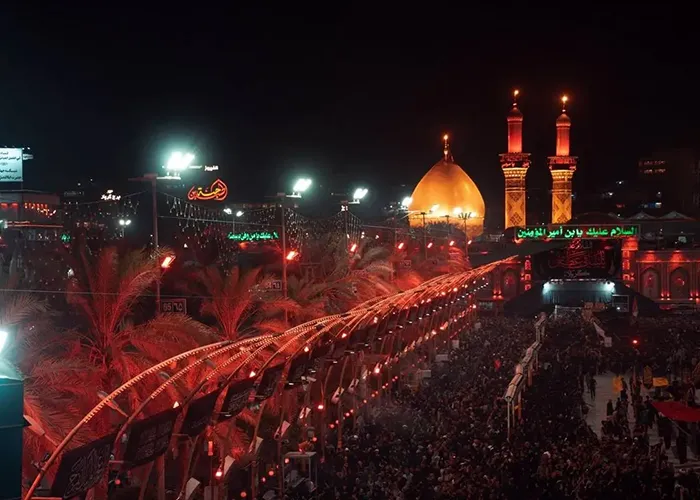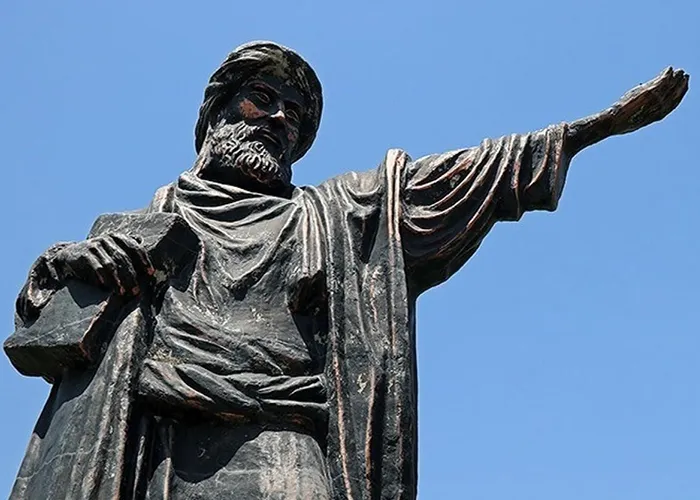Fatwa Panel of the Week – Volume02 Issue32
Rulings Related to the place of worship:
Here are the continuing rules related to the place of worship, according to the fatwas of the Grand Religious Authorities:
Grand Ayatollah Khamenei, Grand Ayatollah Sistani, and Grand Ayatollah Makarem Shirazi (may their eminence be preserved)
Conditions Related to the Place for the person performing prayer: (2)
4. The place of the worship should not be ahead of the grave of the Prophet (peace be upon him and his family) or the Imam (peace be upon him).
| Ayatollah Khamenei | Ayatollah Sistani | Ayatollah Makarem Shirazi |
| 1. The worshipper should not stand ahead of the grave of the Prophet (peace be upon him and his family) or the Imam (peace be upon him) during prayer. However, standing in line with the grave is permissible.
2. If there is something like a wall acting as a barrier between the worshipper and the sacred grave such that standing ahead of it is not considered disrespectful, then praying is permissible. However, the separation created by the shrine’s chest (the structure above the noble grave), the enclosure (zarih), or the cloth draped over it is not sufficient to count as a proper barrier. |
1. It is makrūh (discouraged) to pray in front of the graves of the Prophet (pbuh) or Imams (as), in a way that one’s place of prostration (sajdah) is ahead of the grave.
2. However, if the person stands in line with the grave or behind it, or if there is a barrier (ḥāʾil) such that it is not considered disrespectful, the karāhah is removed. Summary: It is makrūh to stand ahead of the grave, unless a proper barrier is in place, or one is aligned or behind the grave. |
1. Same as Ayatollah Sistani’s Fatwa.
2. Same as Ayatollah Sistani’s Fatwa. |
5. The Place of Prostration Must Be Clean (Tahir)
| 1. 1. The place where the worshipper places their forehead in prostration must be pure (ṭāhir). However, if the rest of the place where the person is praying is impure (najis) — other than the specific spot where the forehead is placed — and the impurity does not transfer to the body or clothing, then there is no problem, and the prayer is valid. | Same as Ayatollah Khamenei’s Fatwa. | Same as Ayatollah Khamenei’s Fatwa. |
6. There Should Be a Distance Between Man and Woman
| 1. 1. Based on obligatory precaution (iḥtiyāṭ wājib), there must be at least a hand-span (one span) of distance between a man and a woman while they are performing prayer (except in Masjid al-Ḥarām). If this distance is maintained, then whether the man and woman stand side by side (parallel) or the woman stands ahead of the man, the prayers of both are valid. It makes no difference whether they are maḥram (closely related) or non-maḥram. |
1. If a woman stands in front of a man (or beside him) while they are praying, and there is no barrier or gap of approximately one span (around 20–25 cm) between them, and the man enters rukūʿ after the woman, then the man’s prayer is invalid.
· If there is a barrier or a sufficient gap, or the man starts rukūʿ before the woman, then the prayer is valid. |
Same as Ayatollah Khamenei’s Fatwa. |
7. The Place of the Worship Must Be Level.
| It is necessary that the spot where the worshipper places their forehead is not higher or lower than the place of their knees and toes by more than four closed fingers’ width. | Same as Ayatollah Khamenei’s Fatwa. | Same as Ayatollah Khamenei’s Fatwa. |
Places Where Performing Prayer Is Recommended
| 1. Mosques – The most virtuous of mosques is Masjid al-Ḥarām, followed by Masjid al-Nabī (peace be upon him and his family), then Masjid al-Kūfah and Masjid al-Aqṣā, and after them, the central mosque (Jāmiʿ) of each city.
2. The shrines of the Imams (peace be upon them) – (Performing prayer in the noble shrines is more virtuous than in mosques.) 3. The sacred shrines of the Prophets (peace be upon them), and the stations of saints, the righteous, and scholars (may Allah’s mercy be upon them). |
1. It is strongly recommended to pray in mosques, with a specific ranking of superiority:
· Masjid al-Ḥarām (in Makkah) · Masjid al-Nabī (in Medina) · Masjid al-Kūfah · Masjid al-Aqṣā · The Jāmiʿ Mosque (main congregational mosque) of a city · The mosque of one’s neighbourhood 2. Shrines of the Imams (as) are considered even more virtuous than mosques for prayer. 3. Also recommended: shrines of prophets, graves of scholars, pious individuals, and places associated with spiritual significance. |
Same as Ayatollah Khamenei’s Fatwa. |
editor's pick
news via inbox
Subscribe to the newsletter.




